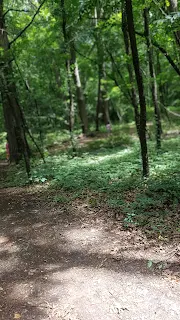Search This Blog
Learning ideas for parents and caregivers educating toddlers and little homeschoolers!
Featured
- Get link
- X
- Other Apps
🧭Teaching Your Child Survival Skills!🏕
 |
| Summer Hike |
Summer is the perfect time to let kids explore the great outdoors—and it’s also a golden opportunity to teach them survival skills that could one day save their lives. But teaching survival doesn’t mean scaring them. With the right approach, you can equip your child with confidence, responsibility, and respect for nature through engaging hands-on experiences.
Why Survival Skills Matter for Kids
- Problem-solving and resilience
- Self-reliance and confidence
- Respect for nature and the environment
- Teamwork and family bonding
1. Start with a Family Safety Talk
Before jumping into activities, talk with your child about why survival skills are important. Use age-appropriate language and avoid fear-based stories. Instead, focus on empowerment and preparedness:
"If you ever get lost, here’s what you can do to stay safe until help arrives."
2. “Stop, Stay, Signal”: What to Do If They Get Lost
- STOP moving
- STAY in one place
- SIGNAL for help (with a whistle, bright clothing, or by making noise)
Parent Tip: Give your child a whistle to wear when hiking or visiting busy public spaces. Teach them to blow three times if they need help.
3. Water Safety & Floating Techniques
Even if your child is a good swimmer, reinforce that lakes, rivers, and oceans are different from pools. Teach your child:
- How to float on their back
- How to tread water
- What to do if caught in a current (swim sideways, not against it)
4. How to Build a Simple Shelter
Let your child try building a lean-to using sticks and a tarp or blanket. This teaches resourcefulness and problem-solving.
Try this: Go camping (even in your backyard!) and make a family challenge out of building a temporary shelter together.
5. Basic First Aid Skills
Use a kid-friendly first aid kit to teach:
- How to clean and bandage a scrape
- How to treat a bug bite or minor burn
- When to get help from an adult
Fun activity: Let your child role-play being the helper when a teddy bear or doll “gets hurt.”
6. Fire Safety and Building
For older kids (ages 8+ with supervision), show how to safely build and put out a campfire:
- Use a fire ring or cleared area
- Practice making a fire with dry twigs and kindling
- Review fire safety rules (never leave it unattended, always have water nearby)
Parent Tip: Even if you don’t light a fire, building one with supervision teaches resource management and patience.
7. Foraging and Plant Awareness
While actual foraging requires deep knowledge, you can:
- Teach the difference between edible and poisonous plants
- Practice identifying common plants like dandelions, berries, or poison ivy
- Use the “no taste-testing unless an adult says OK” rule
Bring along a local field guide or use a nature app like Seek or iNaturalist.
 |
| Foraging for mulberries using the iNaturalist/Seek App. |
8. Map and Compass Basics
Introduce your child to:
- Reading a simple map
- Using a compass to find directions
- Understanding landmarks and trails
Activity idea: Hide treasure or snacks and create a simple map for them to follow.
9. Emergency Contact Practice
Make sure your child knows:
- Their full name, address, and phone number
- Who their emergency contacts are
- How to call 911 (and what to say)
Practice script: “My name is ____. I’m at ____. I need help because ___.”
10. Make It a Summer Challenge
Create a “Survival Skills Summer Challenge” checklist with your child. Include fun goals like:
- Make a shelter
- Identify 5 local plants
- Float for 30 seconds
- Blow a whistle 3 times
- Build a pretend fire circle
- Find north using the sun or a compass
Celebrate each skill with a badge, sticker, or small reward.
Take Away
Teaching survival skills doesn’t mean preparing for disaster—it means building confidence, independence, and respect for the natural world. These lessons can lead to lifelong skills and unforgettable summer memories.
So grab your backpack, head outside, and make this summer one of growth, adventure, and empowerment—for both you and your child.
 |
| Bear Grylls Kids Books |
Bonus Resources
- 📚 Bear Grylls Adventures book series for kids
- 🎒 Provincial Parks Discovery Programs or National Parks Jr. Ranger programs
- 📱 Apps like iNaturalist and Seek

Kids adventure kit
for plant and animal ID - 📘 Books like The Boy’s Book of Adventure or Girls Who Looked Under Rocks
- Adventure Kits
You might also be interested in:
- Get link
- X
- Other Apps
Popular Posts
The Wild Robot Movie vs. The Wild Robot Book
- Get link
- X
- Other Apps
🇨🇦 100 Field Trip Ideas for Kids Manitoba
- Get link
- X
- Other Apps



Comments
Post a Comment